
Last spring, BuzzFeed released a pair of videos, one dealing with what people around the world eat when they get up in the morning, and the other about what they eat after they get liquored up in a bar. Those are both interesting concepts, since breakfast is the most important meal of the day, and the post-drinking, pre-hangover snack is the happiest, but we couldn’t help but scratch our heads at their selections for Japan, neither of which were things we remembered eating in our time living in the country.
Now, BuzzFeed has moved on from the foods Japan puts in its mouth to the words coming out of it, with a new video titled 11 Anime Expressions To Show How You Really Feel. Let’s see how they handled the switch from gastronomy to linguistics.
Right off the bat, let’s clear up that the main objective of the video is to get a laugh, and in that regard, it works. It’s quick-paced and has a couple of clever twists, and provides a reasonable amount of chuckles for the minute and a half it takes to watch.
With that out of the way, it’s time to put on our humorless linguist hat.
▼ Which is, ironically, shaped like Pikachu
Let’s take a look at Buzzfeed’s 11 picks, along with their provided translations.
1. kanashii/sadness
Actually, kanashii is an adjective, so really it should translate as “sad.” Like most Japanese adjectives that end in -i, you can change it to a noun by swapping the last letter for -sa, so if you really wanted to say “sadness,” it’d be kanashisa.
Nice anime-style giant tears, though!
2. neru/sleepy
Um, actually, “sleepy” would be nemui, which just like kanashii is an adjective that ends in -i. Generally, Japanese words that end in -u are verbs, and neru actually means “sleep.”
The video does a little better with the imagery, as a bubble similar to this one usually does designate a sleeping character in manga. It’s usually seen coming from the nose, though, since it’s supposed to be a snot bubble. Seriously, if you have this much mucus coming from your mouth, see a doctor. Odds are the fatigue you feel isn’t from being nemui, but from being near death because of a serious disease/infection of the mouth.
3. shunki/sexual desire
Nice, this time the Japanese term and the provided English equivalent are both the same class of word, as shunki is indeed a noun, and it does mean sexual desire. However, there’s another Japanese word with the same meaning, seiyoku, which is a little more readily understood than the rather stiff shunki.
4. hazukashii/embarrassed
No problems here, plus the continued use of standard anime visual cues with the sweat drop denoting embarrassment or awkwardness.
5. itamu/dejected
BuzzFeed is on pretty solid linguistic ground here, too. Sure, itamu is technically a verb, but it can be used to show someone is feeling a strong disappointment. Still, it’s a pretty stiff choice of vocabulary, and saying it would be akin to announcing, “I lament this!”
The tears are perfect, though, as these less kinetic river-like flows are the anime artist’s choice to show someone trying but failing to maintain a stiff upper lip.
6. shikatanai/annoyed
Like shunki, this is another puzzling translation choice, since actually, the phrase shikatanai is much more likely to cause annoyance than show it. It literally means, “There’s no way to do it,” or put more naturally, “It can’t be helped.” Given Japanese society’s leanings towards fatalism and conflict avoidance, you’ll often hear this in situations where it really could be helped, but no one is willing to take a stand and make a change.
Need to show someone you’re annoyed in Japanese? How about ira ira suru, which shares a syllable with its English equivalent, “to feel irritated.”
7. doki doki/nervous
Technically, BuzzFeed is in the clear here, and also gets bonus points for the return of the sweat drop. If you’ll forgive us for spoiling the joke, though, doki doki is a bit of an odd choice for your girlfriend telling you she might be pregnant.
Doki doki refers to the quickened beating of your heart, whether out of excitement or tension. It’s got a definitely feminine ring to it, though. Teenage girls’ hearts go doki doki when they pass by their dreamy upperclassman in the halls on the way to math class, for example. Being told “I’m pregnant” isn’t the time for a grown man to feel doki doki…
8. shokku/shocked
Nice work, since in Japanese the -ed in “shocked” always drops off.
9. konran/confused
Linguistically this isn’t so bad, but it’s a bit formal for the sort of shockingly zany scenario depicted in the video. Something like wake ga wakaranai shows the same lack of understanding, but with a bit more punch, akin to, “What the heck is that supposed to mean?” Konran, meanwhile, is more often used in formal or business situations when discussing confusion, since it’s a bit stiffer.
10. ureshii/happy
No problems here, but since anime-morphing man is a guy, he might want to go with ureshii na or ureshii n da yo, both of which sound more masculine than the somewhat dainty unadorned ureshii.
11. okoru/angry
Once again, we’ve got a verb (which we can tell from it ending in -u), but in Japanese using okoru (“to be angry”) is indeed the most natural way to talk about the emotion.
However, if you’re upset enough to get an anime-style cross-shaped vein bulging out of your forehead (which BuzzFeed does a great job showing), you might want to use a more impassioned phrase such as mukatsuku or atama ni kita, essentially “I’m pissed” or “I’m mad as hell.”
So, all in all, how did BuzzFeed do? Well, these are Japanese words, but we’re not sure we’d call them “expressions.” It’s more like a list of vocabulary, many of which wouldn’t really be spoken in these situations, and we’re not sure what makes any of them particularly anime-like.
▼ “Memories” isn’t a Marvel Comics expression. It’s just English.
Still, we’re always happy to see people taking an interest in Japanese, and adding a dash of fun and humor can help create the sort of lasting impression that makes it easier to remember a new word. The video’s explanations may miss as often as they hit, but it’s always nice to see someone trying to provide a little context for a language lesson.
So for making that effort, otsukaresama, BuzzFeed.
Source: Livedoor, YouTube
Top image: YouTube
Insert images: YouTube, RocketNews24, Brandeis University

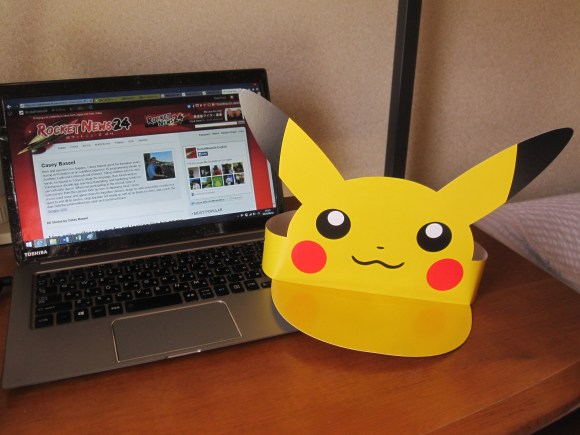
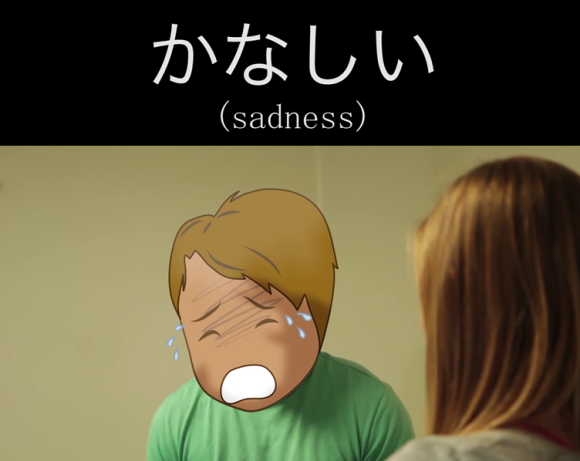
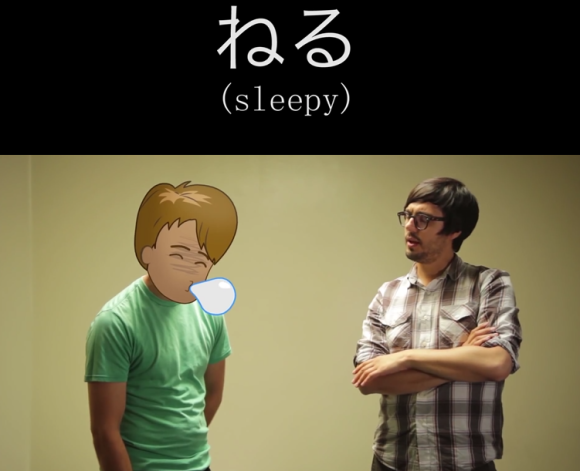
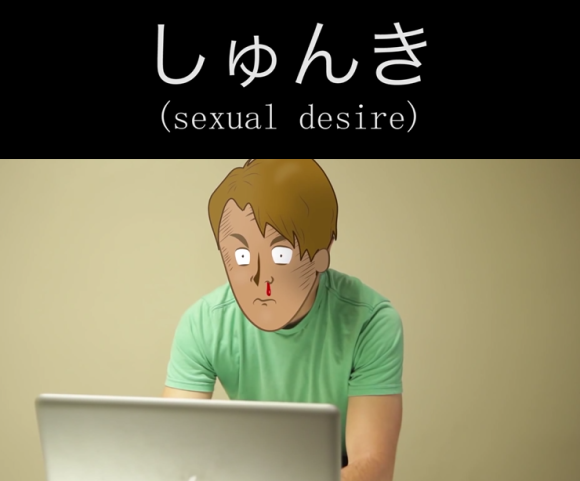
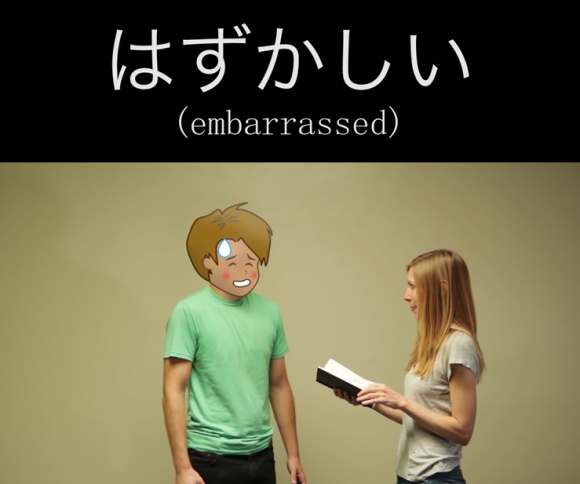
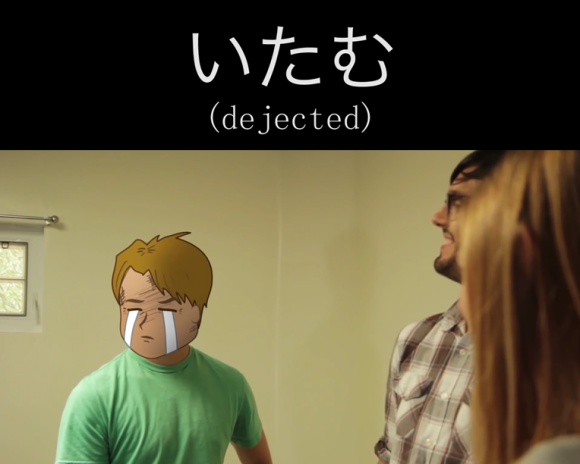
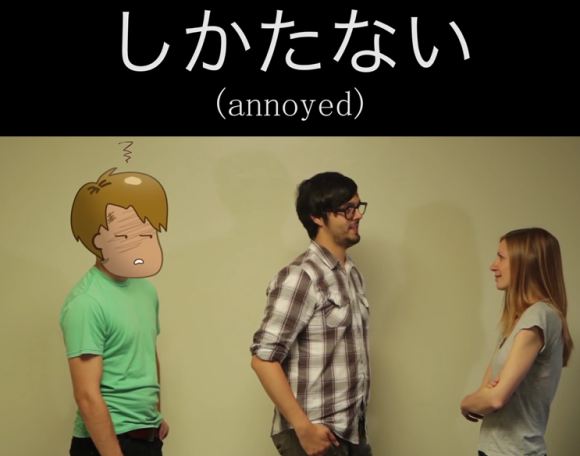
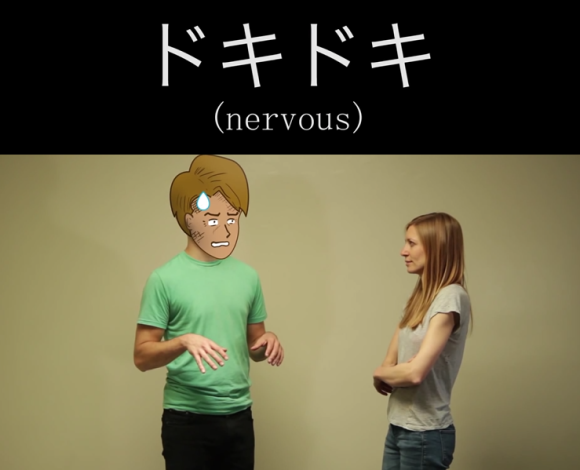
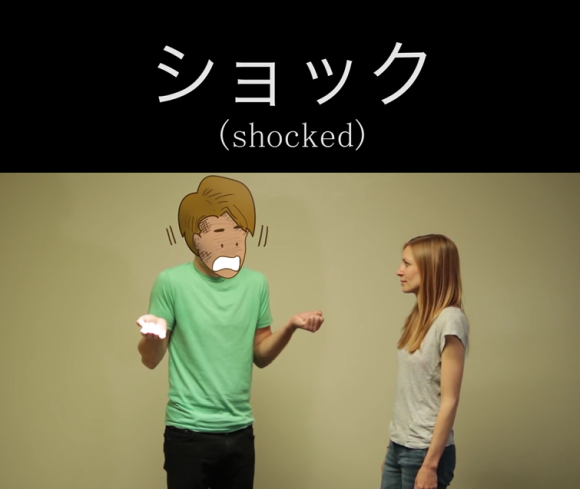
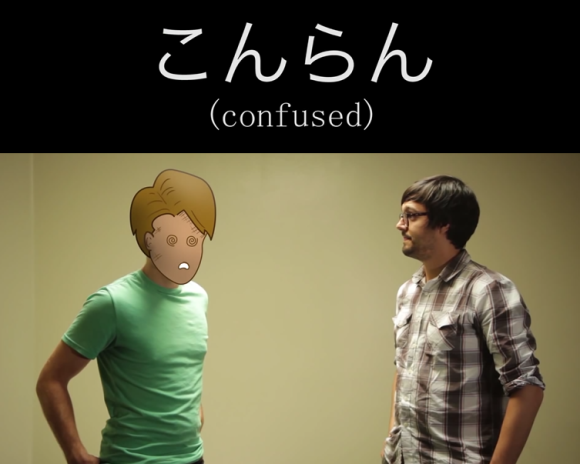


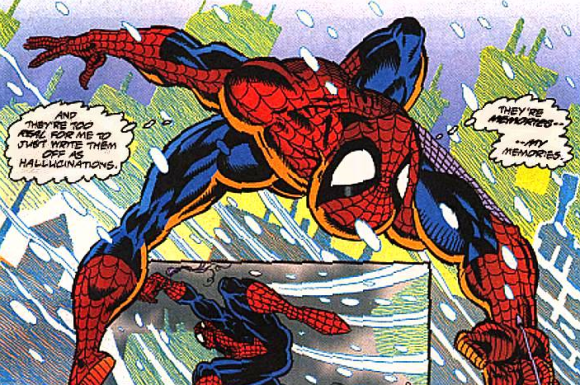
 Video highlights some of the disturbing Pretty Cure live show bloopers
Video highlights some of the disturbing Pretty Cure live show bloopers The terror of playing a Japanese horror video game with cute face filters
The terror of playing a Japanese horror video game with cute face filters Decorate yourself and your home with ancient Japanese exquisiteness from Felissimo
Decorate yourself and your home with ancient Japanese exquisiteness from Felissimo Japan Crate unveils their newest creation – the doki doki kawaii box
Japan Crate unveils their newest creation – the doki doki kawaii box Anime voice actress fan arrested for email telling her to “die die die die”【Updated】
Anime voice actress fan arrested for email telling her to “die die die die”【Updated】 McDonald’s new Happy Meals offer up cute and practical Sanrio lifestyle goods
McDonald’s new Happy Meals offer up cute and practical Sanrio lifestyle goods All-you-can-drink Starbucks and amazing views part of Tokyo’s new 170 meter-high sky lounge
All-you-can-drink Starbucks and amazing views part of Tokyo’s new 170 meter-high sky lounge Studio Ghibli glasses cases let anime characters keep an eye on your spectacles
Studio Ghibli glasses cases let anime characters keep an eye on your spectacles Starbucks reopens at Shibuya Scramble Crossing with new look and design concept
Starbucks reopens at Shibuya Scramble Crossing with new look and design concept More foreign tourists than ever before in history visited Japan last month
More foreign tourists than ever before in history visited Japan last month Osaka’s creepy cute mascot speaks for first time, adds more fuel the creepy OR cute debate【Video】
Osaka’s creepy cute mascot speaks for first time, adds more fuel the creepy OR cute debate【Video】 Japan’s new 2,500-yen Ultimate Matcha Latte Float takes green tea to a whole new level
Japan’s new 2,500-yen Ultimate Matcha Latte Float takes green tea to a whole new level Hamster abandoned at Tokyo ramen restaurant gets new home
Hamster abandoned at Tokyo ramen restaurant gets new home Who makes Japan’s best Spam-style onigiri convenience store rice ball? Let’s find out【Taste test】
Who makes Japan’s best Spam-style onigiri convenience store rice ball? Let’s find out【Taste test】 The oldest tunnel in Japan is believed to be haunted, and strange things happen when we go there
The oldest tunnel in Japan is believed to be haunted, and strange things happen when we go there Disney princesses get official manga makeovers for Manga Princess Cafe opening in Tokyo
Disney princesses get official manga makeovers for Manga Princess Cafe opening in Tokyo Beautiful new Final Fantasy T-shirt collection on the way from Uniqlo【Photos】
Beautiful new Final Fantasy T-shirt collection on the way from Uniqlo【Photos】 Is the new Shinkansen Train Desk ticket worth it?
Is the new Shinkansen Train Desk ticket worth it? Foreign English teachers in Japan pick their favorite Japanese-language phrases【Survey】
Foreign English teachers in Japan pick their favorite Japanese-language phrases【Survey】 Japanese convenience store packs a whole bento into an onigiri rice ball
Japanese convenience store packs a whole bento into an onigiri rice ball We try out “Chan Ramen”, an underground type of ramen popular in the ramen community
We try out “Chan Ramen”, an underground type of ramen popular in the ramen community Studio Ghibli releases Kiki’s Delivery Service chocolate cake pouches in Japan
Studio Ghibli releases Kiki’s Delivery Service chocolate cake pouches in Japan Japan’s bone-breaking and record-breaking roller coaster is permanently shutting down
Japan’s bone-breaking and record-breaking roller coaster is permanently shutting down New definition of “Japanese whiskey” goes into effect to prevent fakes from fooling overseas buyers
New definition of “Japanese whiskey” goes into effect to prevent fakes from fooling overseas buyers Our Japanese reporter visits Costco in the U.S., finds super American and very Japanese things
Our Japanese reporter visits Costco in the U.S., finds super American and very Japanese things Studio Ghibli unveils Mother’s Day gift set that captures the love in My Neighbour Totoro
Studio Ghibli unveils Mother’s Day gift set that captures the love in My Neighbour Totoro Foreign passenger shoves conductor on one of the last full runs for Japan’s Thunderbird train
Foreign passenger shoves conductor on one of the last full runs for Japan’s Thunderbird train Domino’s Japan now sells…pizza ears?
Domino’s Japan now sells…pizza ears? New Japanese KitKat flavour stars Sanrio characters, including Hello Kitty
New Japanese KitKat flavour stars Sanrio characters, including Hello Kitty Kyoto creates new for-tourist buses to address overtourism with higher prices, faster rides
Kyoto creates new for-tourist buses to address overtourism with higher prices, faster rides Sales of Japan’s most convenient train ticket/shopping payment cards suspended indefinitely
Sales of Japan’s most convenient train ticket/shopping payment cards suspended indefinitely Sold-out Studio Ghibli desktop humidifiers are back so Totoro can help you through the dry season
Sold-out Studio Ghibli desktop humidifiers are back so Totoro can help you through the dry season Japanese government to make first change to romanization spelling rules since the 1950s
Japanese government to make first change to romanization spelling rules since the 1950s Ghibli founders Toshio Suzuki and Hayao Miyazaki contribute to Japanese whisky Totoro label design
Ghibli founders Toshio Suzuki and Hayao Miyazaki contribute to Japanese whisky Totoro label design Doraemon found buried at sea as scene from 1993 anime becomes real life【Photos】
Doraemon found buried at sea as scene from 1993 anime becomes real life【Photos】 Tokyo’s most famous Starbucks is closed
Tokyo’s most famous Starbucks is closed One Piece characters’ nationalities revealed, but fans have mixed opinions
One Piece characters’ nationalities revealed, but fans have mixed opinions We asked a Uniqlo employee what four things we should buy and their suggestions didn’t disappoint
We asked a Uniqlo employee what four things we should buy and their suggestions didn’t disappoint Princesses, fruits, and blacksmiths: Study reveals the 30 most unusual family names in Japan
Princesses, fruits, and blacksmiths: Study reveals the 30 most unusual family names in Japan Gal Gun English collector’s edition includes handy screen wipe shaped like girls’ panties
Gal Gun English collector’s edition includes handy screen wipe shaped like girls’ panties Officially licensed anime guillotine just might be the weirdest otaku merch ever
Officially licensed anime guillotine just might be the weirdest otaku merch ever Japan fans call Rugby World Cup player Luke Thompson “kawaii” for the way he speaks Japanese
Japan fans call Rugby World Cup player Luke Thompson “kawaii” for the way he speaks Japanese Japanese soccer fans remember their manners in Brazil, clean up before going home
Japanese soccer fans remember their manners in Brazil, clean up before going home Thousands oppose Osaka Metro’s plan to change major stations in giant boats and fabric swatches
Thousands oppose Osaka Metro’s plan to change major stations in giant boats and fabric swatches AI Samurai: The artificially intelligent, armored samurai that will answer all your questions
AI Samurai: The artificially intelligent, armored samurai that will answer all your questions Japanese writing system gets turned into handsome anime men with Hiragana Boys video game
Japanese writing system gets turned into handsome anime men with Hiragana Boys video game SoraNews24’s loneliest reporter tests Japan’s new anime-style AI girlfriend smartphone app 【Vid】
SoraNews24’s loneliest reporter tests Japan’s new anime-style AI girlfriend smartphone app 【Vid】 English conversation school in Japan has clever reminder that students don’t have to be perfect
English conversation school in Japan has clever reminder that students don’t have to be perfect 11 different ways to say “father” in Japanese
11 different ways to say “father” in Japanese Revealed! Japan’s top 10 handsome samurai【Photos】
Revealed! Japan’s top 10 handsome samurai【Photos】 Anime-style magic circles summon vocabulary for you in this language-learning app from Japan【Vid】
Anime-style magic circles summon vocabulary for you in this language-learning app from Japan【Vid】 Sweating, snuggling models and voice actresses steam up series of spicy ramen ads 【Videos】
Sweating, snuggling models and voice actresses steam up series of spicy ramen ads 【Videos】 The clever way Japanese drivers thank each other without saying a word【Video】
The clever way Japanese drivers thank each other without saying a word【Video】 What are the most and least attractive hobbies for Japanese men and women? Survey investigates
What are the most and least attractive hobbies for Japanese men and women? Survey investigates
Leave a Reply